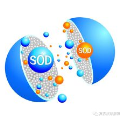Salient object detection(SOD) aims at locating the most significant object within a given image. In recent years, great progress has been made in applying SOD on many vision tasks. The depth map could provide additional spatial prior and boundary cues to boost the performance. Combining the depth information with image data obtained from standard visual cameras has been widely used in recent SOD works, however, introducing depth information in a suboptimal fusion strategy may have negative influence in the performance of SOD. In this paper, we discuss about the advantages of the so-called progressive multi-scale fusion method and propose a mask-guided feature aggregation module(MGFA). The proposed framework can effectively combine the two features of different modalities and, furthermore, alleviate the impact of erroneous depth features, which are inevitably caused by the variation of depth quality. We further introduce a mask-guided refinement module(MGRM) to complement the high-level semantic features and reduce the irrelevant features from multi-scale fusion, leading to an overall refinement of detection. Experiments on five challenging benchmarks demonstrate that the proposed method outperforms 11 state-of-the-art methods under different evaluation metrics.
翻译:高度物体探测(SOD)旨在将最重要的物体定位在特定图像中。近年来,在应用SOD执行许多视觉任务方面取得了很大进展。深度地图可以提供更多的空间前期和边界提示来提高性能。将深度信息与标准视像相机获得的图像数据相结合,在最近的SOD工作中已被广泛使用,但是,在亚最佳聚合战略中引入深度信息可能对SOD的性能产生消极影响。在本文件中,我们讨论了所谓的渐进式多级聚合方法的优势,并提出了一个蒙面引导特性集成模块(MGFA)。拟议的框架可以有效地将不同模式的两个特征结合起来,并减轻错误深度特征的影响,这些特征不可避免地因深度质量的变化而造成。我们进一步引入了蒙式引导改进模块(MGRM),以补充高层次的静脉特征,并减少多尺度混凝的不相干特征,从而导致对探测的全面改进。关于五项挑战性基准的实验表明,拟议的方法在不同的评价中超越了11个州的方法。




